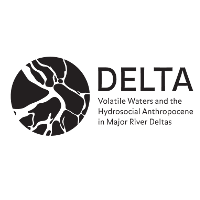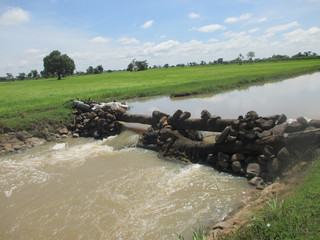The UNC Global Research Institute conference organized in Phnom Penh on March 16-18 was a very inspiring event that brought together over 20 scholars from various disciplines to dicuss environmental transformations in the lower Mekong.
In this context, I had the opportunity to present a paper co-written by Jean-Philippe Venot (IRD, RuA) about the environmental dimension of Irrigation management Transfer in the Lower Mekong with insights from Cambodia.
Agricultural water management critically shapes the landscapes and economic development of the lower Mekong Region. Irrigation systems notably, and most strikingly in the Mekong delta in Vietnam, are structuring and strongly impacting the environment. This is also increasingly the case in Cambodia where, since the late 1990s, the government has been pursuing an ambitious irrigation development policy partly inspired by the imagery of Angkor as a hydraulic empire. Right from the start, and under the impetus of international development agencies, the Cambodian irrigation development policy was inspired by a “model” known as that of irrigation management transfer (IMT) that hinged on the assumption that handing over the responsibility for managing irrigation to farmers, organized in Water User Associations (WUA), will lead to more (economically) sustainable irrigation. This paper aims at shedding light on the environmental implications of irrigation management transfer in Cambodia and, in turn, discusses how and to what extent the environment influences the way irrigation takes place. Documenting two geographically distinct irrigation systems in which IMT was recently implemented in Cambodia, this paper shows how water control conditions, flood and drought risks, soil quality and cropping patterns interfere in the process of devolving irrigation management responsibilities to farmers. We show that the type of irrigation infrastructure, and the level of water control it allows, is central to explain water service delivery hence how Water User Associations (known as Farmer Water User Communities in Cambodia) function and their level of dynamism. In turn, this influences how irrigation takes place and its impact on the environment such as through uncontrolled use of small pumps and ponds or through increased erosion of soils and earthen canals that could further threaten the long-term sustainability of the irrigation organization.
(use of motorpumps, irrigation system, Kombot Province)
Irrigation has often been conceived as a technical domain, pertaining to engineering rather than social sciences. The political and ideological dimensions that underpin such modern irrigation development are yet key to understand how irrigation projects have historically structured the Mekong Basin. In the case of Cambodia, the development of irrigation schemes have notably been inspired by the imagery of Angkor as an Hydraulic empire and based on a complex grid-like network and artificialization of the milieu (which is very controversial to date, notably the role of the 'barays' (reservoirs), see for instance Pillot (2007).
The successive ruling regimes in Cambodia, from the French Protectorate to the Khmer Rouges, inspired from this imagery to justify the development of water management infrastructure. As part of my PhD research on the Ayeyarwady, it is also crucial to understand the discursive and material dimensions of water resources development, especially infrastructure construction. Compared to other deltas in South and Southeast Asia (Mekong, Red River, Chao Phraya, etc.), the Ayeyarwady/Irrawaddy delta has a very limited tradition of infrastructure development which is also linked to a number of political economy factors, notably the closing of the country. Relecting on the historical development of the delta (relatively undeveloped but of considerable use) will require to explore the "delta" imaginary, that is how the delta has been collectivelly represented. This will also be useful to recontextualize the current development and plans for the delta in the light of past transformations and percepetions.
References:
Pillot, D., 2007. Jardins et rizières du Cambodge: les enjeux du développement agricole. KARTHALA Editions.

